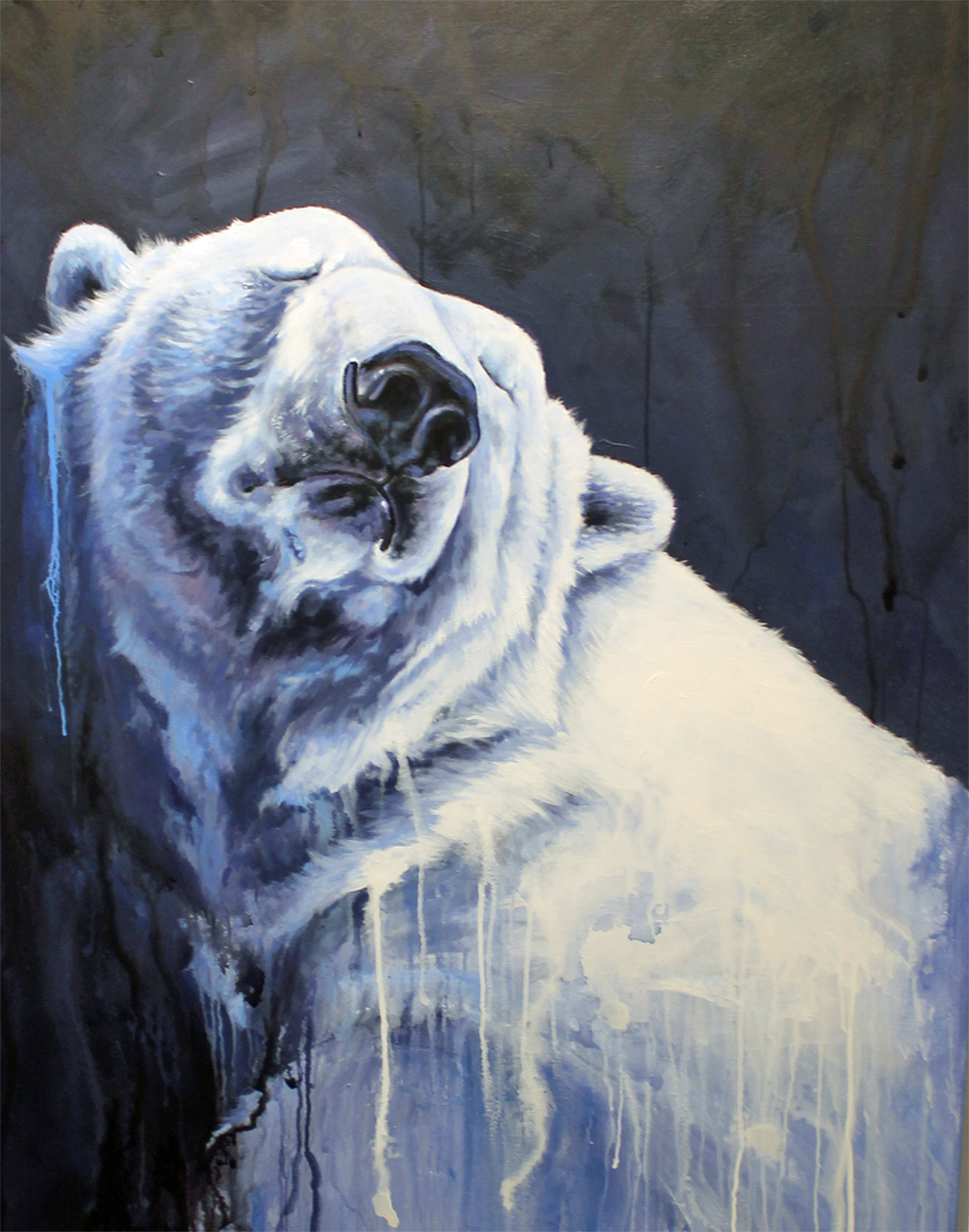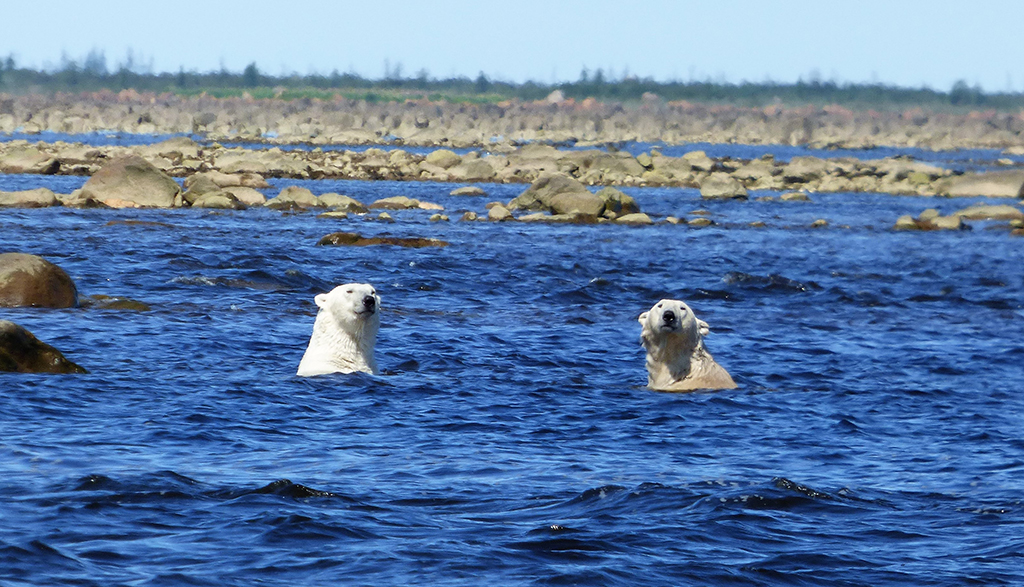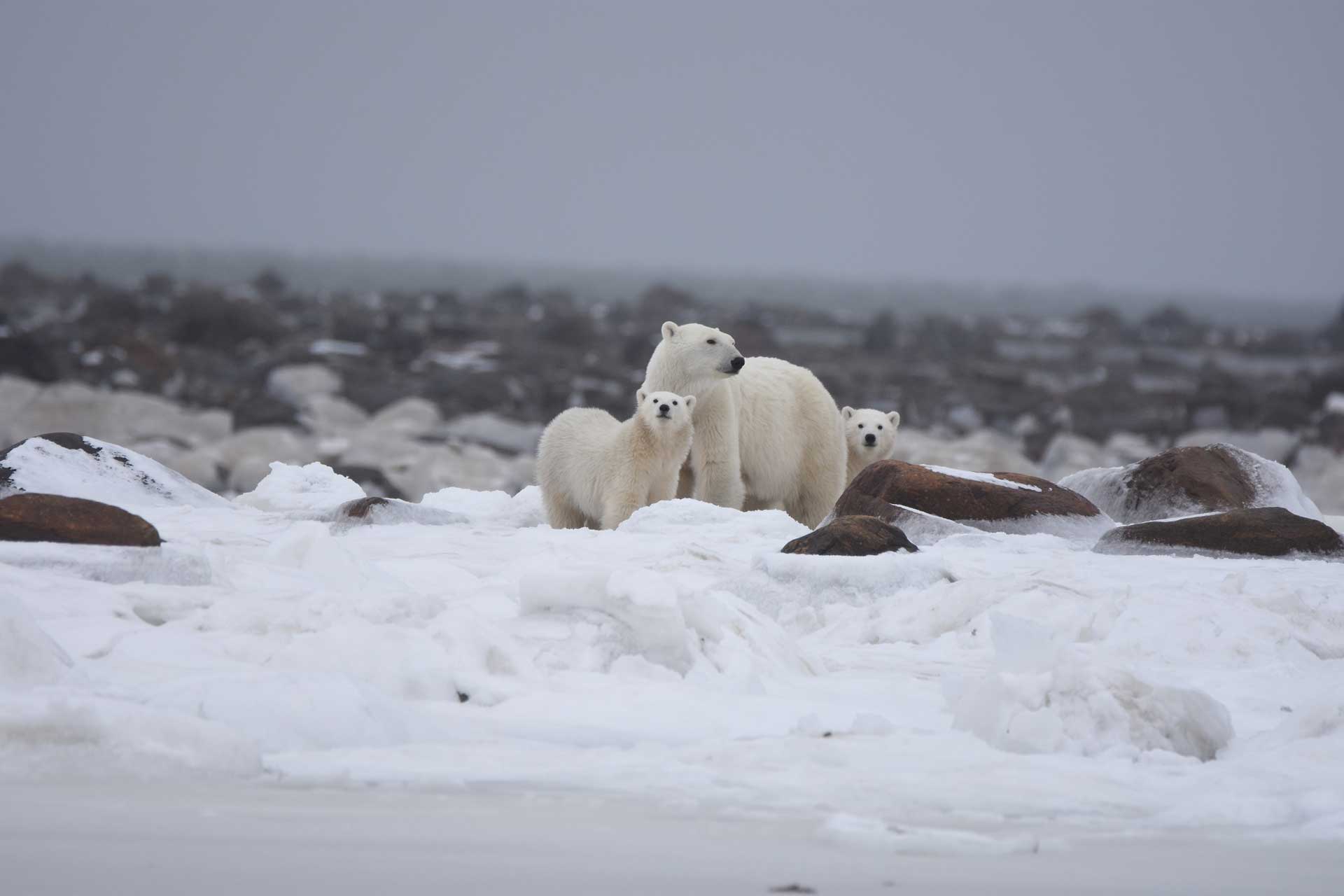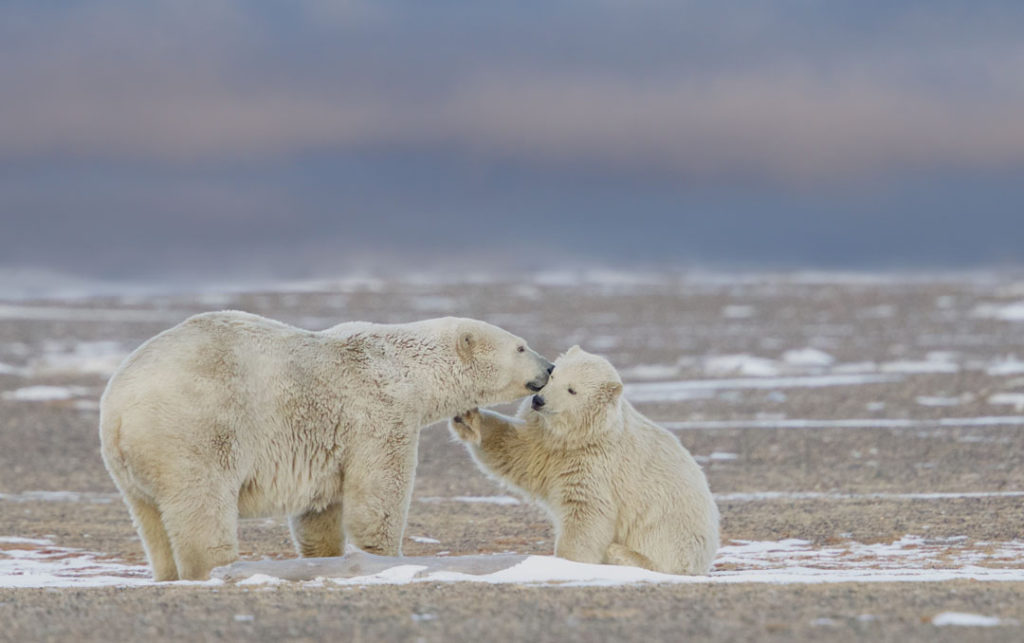
Greta. “Enjoying the sunbeam, her grace and poise so elegant and glamorous. I could almost feel the warmth of the sun coming off her coat as she melted into the rock daybed.” ~ Artist Kal Barteski
 February 27, 2023 is International Polar Bear Day, and people from around the globe will be celebrating by reducing their impact on the environment, while also creating awareness about the impact of global warming, especially where it concerns polar bears.
February 27, 2023 is International Polar Bear Day, and people from around the globe will be celebrating by reducing their impact on the environment, while also creating awareness about the impact of global warming, especially where it concerns polar bears.
Polar bears depend on sea ice for survival and the Arctic is warming at twice the rate of the rest of the world, which means less ice for longer periods. This amazing timelapse from Google Earth shows just how fast the ice is disappearing.
Polar bears feed primarily on seals and the sea ice provides them with nature’s perfect hunting platform. They will spend hours and even days waiting for seals to surface at breathing holes and grab them as they come up for air. Hunting seals in open water is much more difficult for polar bears, and generally not a successful endeavor.

Polar bears are excellent swimmers, but they do most of their travelling on foot via the sea ice. Steve Herring photo.
Polar bears also use the sea ice for socializing, finding mates and travelling to find additional food sources. Although they are excellent swimmers, travelling long distances in open water is much more difficult, and even exhausting, especially if the bear has been unable to find enough food during the ice season to stay strong and healthy.
Polar bears are listed as a vulnerable species by the International Union for Conservation of Nature (IUCN) due to the ongoing loss of their sea ice habitat, and International Polar Bear Day was created by Polar Bears International in an effort to raise awareness about the importance of protecting polar bears and their fragile Arctic ecosystem.
Numerous activities, events, educational programs, fundraising events and social media campaigns are conducted by organisations including Polar Bears International, the World Wildlife Fund and the Winnipeg Foundation, in an effort to help people learn more about the threats facing polar bears and their habitat.
We couldn’t imagine a better image to represent International Polar Bear Day, than the one above taken from a painting by renowned polar bear artist Kal Barteski.
“Greta” appeared in Barteski’s Winnipeg show Polar Bear Polar Bear in 2017 and Barteski also established a Polar Bear Fund in conjunction with the Winnipeg Foundation, that focuses on contributing to innovative, non-invasive polar bear research.
“It’s been a long time coming,” said Barteski on her website. “And it is not my idea alone. I live in a province that is the home to one of the largest populations of denning mother polar bears. I believe wholeheartedly that this is a responsibility not to be taken lightly. I believe that when mothers, of any creature, are treated with respect and dignity – their children thrive. I also believe that polar bears are a mighty, mighty spirit that should be supported, honoured and cherished.”
International Polar Bear Day is a day when people are asked to reduce their carbon output by doing things such as turning their thermostats down, driving less, using more energy-efficient devices, and simply being kinder to the environment through reducing, reusing and recycling, which is something we’ve been practicing at our ecolodges for over 30 years.
Theories stating that limiting the use of carbon-based fuels can slow global warming do seem to have some validity, and we do everything we can at our polar bear lodges to minimize our footprint on the environment including:
- efficient use of solar power
- strict recycling and composting policies
- use of biodegradable cleaning products and in-room toiletries
- minimum use of motorized vehicles (hence our walking with polar bears adventures!)
- use of energy efficient appliances and lights
- locally foraged and harvested food whenever possible
- educating and informing guests about polar bears and their environment
Will our efforts make a difference? Will yours? We think they will. Everything counts, which is why we’ve been practicing the above ever since we began hosting guests in the Arctic. It’s part of our lifestyle now.
Will polar bears become extinct if the sea ice melts completely, or will they adapt and evolve, learning how to hunt efficiently and socialize on land. That’s a decision nature will have to make. We’ve seen polar bears hunting beluga whales at Seal River Heritage Lodge during the summer, and these amazing creatures will continue to do what they must to survive.
Polar bears are magnificent animals and they have helped us for most of our working lives on the Hudson Bay coast over the past 50 years, in one of the most pristine and wild places on the planet. The very least we can do is be kind to the earth, reduce our carbon footprint, and minimize our impact on the environment. That’s not only good for the polar bears.
It’s good for the planet.











